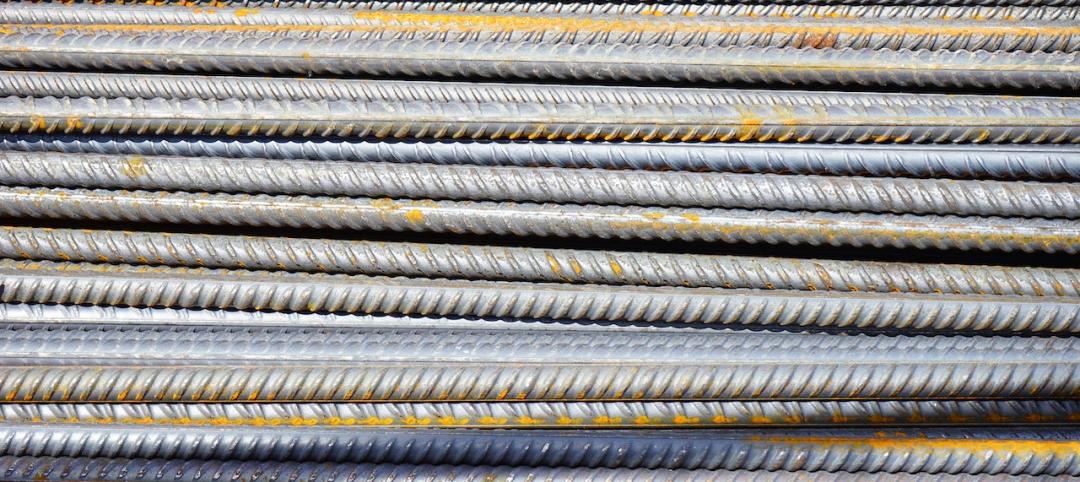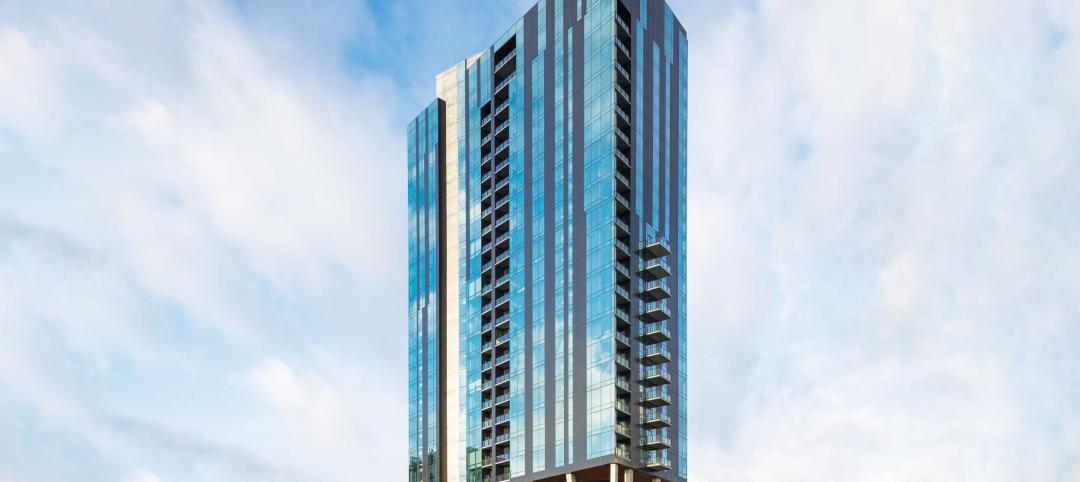CHICAGO (May 19, 2011) –The U.S. Green Building Council (USGBC) today noted that Chicago has the highest number of square feet of LEED certified green building projects nationally with 71 million square feet.
Of that total, there are 736 LEED projects that are either already certified or currently in the certification process in Chicago. Of these, 122 are certified or registered using LEED for Existing Buildings: Operations & Maintenance (O&M).
“The trend toward LEED certification for existing buildings is growing both nationally and locally. LEED for Existing Buildings is an important tool for building owners and managers to add value and increase efficiency,” said Doug Widener, executive director of the USGBC – Illinois Chapter. “By pursuing certification, buildings are also making a conscious effort to support energy conservation which is at the center of the newly announced federal Better Buildings Initiative and the Chicago Region Initiative for Better Buildings.”
Nationally, the amount of square feet of space certified under LEED for Existing Buildings: Operations and Maintenance grew by 72 percent from 2009 to 2010. Currently, more than 18 percent of all LEED projects nationally fall under the LEED for Existing Buildings rating system. In Illinois, LEED for Existing Buildings projects account for 13 percent of the 440 LEED certified and 960 registered projects across the state. In Illinois, the amount of square feet of space certified under LEED for Existing Buildings: Operations and Maintenance grew faster than the national rate, nearly quadrupling from 2009 to 2010. Some newly certified LEED for Existing Buildings: O&M projects in Chicago include: Hyatt Center, 350 Mart Center, 20 N. Michigan, 225 West Wacker, 20 N. Clark, and 191 N. Wacker.
USGBC’s LEED green building certification system is the foremost program for the design, construction, operations and maintenance of green buildings. More than 40,000 projects are currently participating in the commercial and institutional LEED rating systems, comprising more than 7.9 billion square feet of construction space in all 50 states and 119 countries. In addition, more than 10,000 homes have been certified under the LEED for Homes rating system, with 45,000 more homes registered.
By using less energy, less water and low-toxicity materials, LEED-certified buildings save money for families, businesses and taxpayers; reduce greenhouse gas emissions; and contribute to a healthier environment for residents, workers and the larger community.
The LEED for Existing Buildings Rating System addresses whole-building cleaning and maintenance issues (including chemical use), recycling programs, exterior maintenance programs and systems upgrades. It can be applied both to existing buildings seeking LEED certification for the first time and to projects previously certified under LEED for New Construction, Schools, or Core & Shell.
“LEED sets the benchmark for what is possible with high-performing buildings,” says Scot Horst, senior vice president of LEED, USGBC. “The work being done throughout the state of Illinois is a great example of how LEED encompasses everything from new construction to green existing commercial buildings, schools, campuses and homes.”
Illinois has been a longtime supporter of green building initiatives and legislation. In both 2007 and 2010, Chicago hosted the USGBC’s annual Greenbuild International Conference & Expo. Recently the Illinois Chapter released a comprehensive report identifying opportunities to green all schools in Illinois. The report was the result of more than two years of collaboration between the USGBC-Illinois Chapter, civic and corporate partners, and was commissioned as a result of the October 2009 adoption of House Joint Resolution 45 by the Illinois General Assembly introduced by State Representative Karen May who has since become Chair of the National Advisory Council of the 50 for 50 Green Schools Caucus Initiative. In addition, U.S. Representative Robert Dold from the 10th District of Illinois was recently named Co-Chair of the Congressional Green Schools Caucus.
USGBC - Illinois will host its 6th Annual Emerald Gala at Soldier Field’s United Club in Chicago on Saturday, May 21, 2011. The Gala is USGBC–Illinois’ biggest fundraising event of the year and the regional green building community’s night to celebrate individual and collaborative efforts to make cities, region, and state healthy, sustainable, and efficient places to live, work, and learn. This annual event attracts over 400 leaders from across the state and building industry.
The U.S. Green Building Council is committed to a prosperous and sustainable future for our nation through cost-efficient and energy-saving green buildings.
With a community comprising 79 local affiliates, 16,000 member companies and organizations, and more than 165,000 LEED Professional Credential holders, USGBC is the driving force of an industry that is projected to contribute $554 billion to the U.S. gross domestic product from 2009-2013. USGBC leads a diverse constituency of builders and environmentalists, corporations and nonprofit organizations, elected officials and concerned citizens, and teachers and students.
Buildings in the United States are responsible for 39 percent of CO2 emissions, 40 percent of energy consumption, 13 percent water consumption and 15 percent of GDP per year, making green building a source of significant economic and environmental opportunity. Greater building efficiency can meet 85 percent of future U.S. demand for energy, and a national commitment to green building has the potential to generate 2.5 million American jobs.
Full list of LEED-certified projects nationally.
The U.S. Green Building Council – Illinois Chapter
The U.S. Green Building Council – Illinois Chapter’s 1,600 members represent the entire spectrum of Illinois’ green building community, from real estate professionals, architects, engineers, designers and trade associations to contractors, product manufacturers, state and local government officials, homebuilders and homeowners. The U.S. Green Building Council – Illinois Chapter is the local affiliate of the U.S. Green Building Council (USGBC), a national non-profit composed of leaders from every sector of the building industry working to promote buildings that are environmentally responsible, profitable and healthy places to live and work. The Illinois Chapter furthers the work of USGBC through more than150 annual programs, events, education and research initiatives, advocacy campaigns, and resources throughout its network of seven local branches: Chicago, Central Illinois, Fox Valley, North/Northwest Suburban, Rockford/Northern Illinois, South Suburban, and West Suburban.
Related Stories
Adaptive Reuse | Jul 6, 2023
The responsibility of adapting historic university buildings
Shepley Bulfinch's David Whitehill, AIA, believes the adaptive reuse of historic university buildings is not a matter of sentimentality but of practicality, progress, and preservation.
Apartments | Jun 27, 2023
Dallas high-rise multifamily tower is first in state to receive WELL Gold certification
HALL Arts Residences, 28-story luxury residential high-rise in the Dallas Arts District, recently became the first high-rise multifamily tower in Texas to receive WELL Gold Certification, a designation issued by the International WELL Building Institute. The HKS-designed condominium tower was designed with numerous wellness details.
Building Materials | Jun 14, 2023
Construction input prices fall 0.6% in May 2023
Construction input prices fell 0.6% in May compared to the previous month, according to an Associated Builders and Contractors analysis of the U.S. Bureau of Labor Statistics’ Producer Price Index data released today. Nonresidential construction input prices declined 0.5% for the month.
Sustainability | Apr 20, 2023
13 trends, technologies, and strategies to expect in 2023
Biophilic design, microgrids, and decarbonization—these are three of the trends, technologies, and strategies IMEG’s market and service leaders believe are poised to have a growing impact on the built environment.
Codes | Mar 2, 2023
Biden Administration’s proposed building materials rules increase domestic requirements
The Biden Administration’s proposal on building materials rules used on federal construction and federally funded state and local buildings would significantly boost the made-in-America mandate. In the past, products could qualify as domestically made if at least 55% of the value of their components were from the U.S.
AEC Innovators | Feb 28, 2023
Meet the 'urban miner' who is rethinking how we deconstruct and reuse buildings
New Horizon Urban Mining, a demolition firm in the Netherlands, has hitched its business model to construction materials recycling. It's plan: deconstruct buildings and infrastructure and sell the building products for reuse in new construction. New Horizon and its Founder Michel Baars have been named 2023 AEC Innovators by Building Design+Construction editors.
Sustainability | Feb 8, 2023
A wind energy system—without the blades—can be placed on commercial building rooftops
Aeromine Technologies’ bladeless system captures and amplifies a building’s airflow like airfoils on a race car.
Mass Timber | Jan 27, 2023
How to set up your next mass timber construction project for success
XL Construction co-founder Dave Beck shares important preconstruction steps for designing and building mass timber buildings.
Products and Materials | Jan 18, 2023
6 innovative products for multifamily developments
Here are six innovative products for various multifamily developments, including a condominium-wide smart electrical system, heavy-duty aluminum doors, and prefabricated panels.
Green | Dec 9, 2022
Reaching carbon neutrality in building portfolios ranks high for organizations
Reaching carbon neutrality with their building portfolios ranks high in importance among sustainability goals for organizations responding to a Honeywell/Reuters survey of senior executives at 187 large, multinational corporations. Nearly nine in 10 respondents (87%) say that achieving carbon neutrality in their building portfolio is either extremely (58%) or somewhat (29%) important in relation to their overall ESG goals. Only 4% of respondents called it unimportant.

















